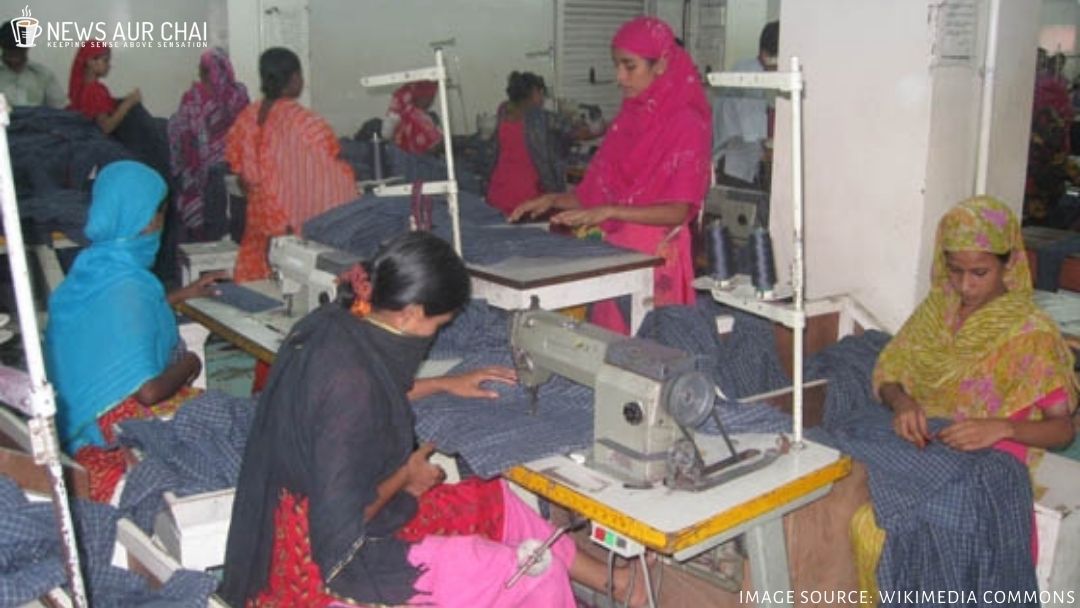Expensive Fashion And Inexpensive Ideals

Fashion charms every individual, enticing them to stuff their wardrobe with more than they need and more than they want. More often than not, the appeal of the glamourous and sequined designer clothes scintillates so vividly that it blinds us to think beyond this coruscating designs and trends. However, there lies a world darker than the gleams of fashion befitting an apt contrast of the inner and the outer world of fashion — beneath the glam lies the remote system of the supply chain of this humongous industry.
Many of us would be unaware of the reality of the extravagance of shimmering brands on the runways of Paris and Milan, leaving everyone amazed, but there is more to the glamour and lights on the runways. These brands indirectly employ workers and highly skilled artisans in the developing countries at much cheaper rates for services like sampling, design and garments production.
For a long time, European and US garments companies have prospered by establishing their manufacturing units in low-cost countries like India, Bangladesh in search of inexpensive fabric sourcing, designing, embroidery. The fashion conglomerates have been successful in extracting the most thoughtful designs with distinct quality fabric at minimum prices and meagre labour costs.
Not only does this pattern reinforce social injustice but also harms the environment significantly. To fetch the best at minimum rates without a system of check and balances has resulted in the exploitation of resources at an alarming rate. For instance, one can not let go of the devastating collapse of the Rana Plaza in the year 2013 in Bangladesh, killing 1,134 people. The workers’ unions called it a “mass industrial homicide.”
The fatal collapse of the apparel factory inflamed debate over worker safety in the effort to drive down prices for international manufacturers and consumers. Their merchandises were designed for Dior and Saint Laurent, among other luxury names. Furthermore, companies that manufactured goods at Rana Plaza included Gap, Adidas, Walmart and dozens more.
As people became more aware of the loopholes and companies encountered public scrutiny, which resulted in an urgency to bridge the gap and work towards economic sustainability, environment and social administration. Hence, leading them to work on making manufacturing sourcing more sustainable by concentrating on the triple bottom line (TBL) strategy, which involves the economic, environmental and social dimensions of sustainability.
The life trading behind the gleaming fashion industry and the transient trends is very grim. The workers are sewing without any health benefits and any labour laws to protect their interests. People working relentlessly to put forth magnificent designs for the mega runway event without any substantial remuneration, and are consumed with overtime completing the order for international designers and often found sleep on the floors of their factories.
As much as the indulgence of fast-fashion retailers in the contracts with independent factories for producing inexpensive designs, many luxury brands align to the same trend of deals with independent factories to produce their apparels and for embroidery as the biggies also lack proper production facilities.
In 2016, an ambitious and secretive compliance project intended to ensure factory safety for workers in Mumbai and elevating Indian embroidered by a group of luxury houses and proposed the Utthan pact. Among the signatories were Kering (owner of labels including Gucci and Saint Laurent); LVMH Louis Vuitton Moët Hennessy (owner of Fendi and Christian Dior); and two British fashion houses, Burberry and Mulberry. The pact had an initial three-year timeline but was not legally binding. However, the reality was less dreamy than the arrangement as the situation was not improved.
As much as the companies endeavour to make a profit in every deal, they should also be obligated to nurture a healthy ground for the workers. The birds-eye view of the industry is needed to engage in a solution motivated implementation for a worker’s friendly schemes and pacts. It is not just an ethical obligation of the sectors making money on deathbeds of the daily wagers but are also duty-bound to commission the workers for their hard work.






One Comment